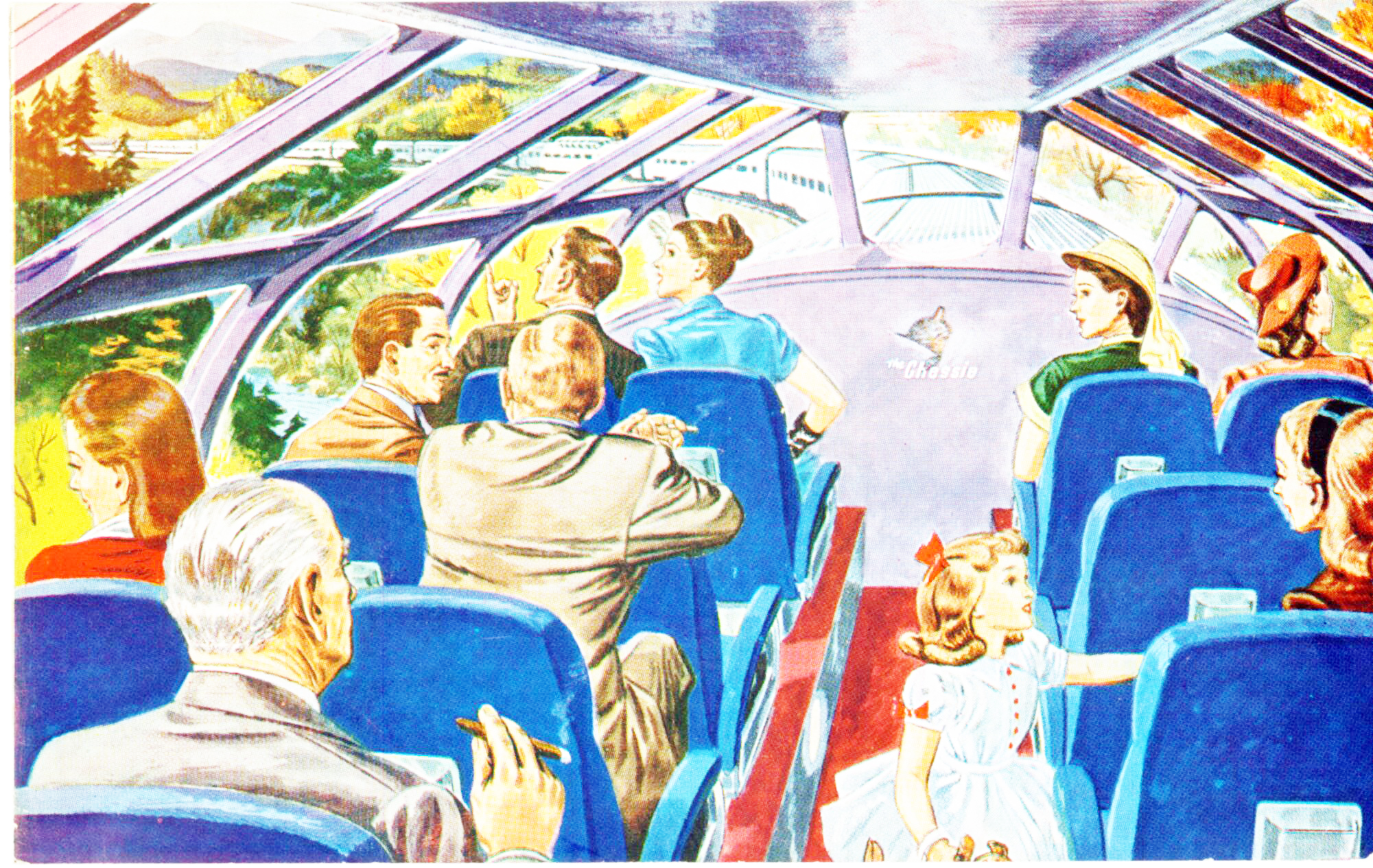
The Chesapeake & Ohio Historical Society has released the first-ever full-length book on a nearly forgotten passenger train that was developed, built, and announced by the C&O Railway in the 1940s, but abruptly cancelled before entering revenue service. A story previously told only in pieces through scattered magazine articles from 1969 to 2019, the saga of The Chessie, a passenger train named after the railroad’s famous mascot, “Chessie the Railroad Kitten,” has now been compiled through decades of research with information in the nonprofit organization’s extensive archives.
The book, titled Chesapeake & Ohio’s The Chessie, the Train that Was, but Never Was, tells the complete story of the fabulous passenger train that the C&O Railway’s Chairman, Robert R. Young and his research chief, Kenneth Browne, designed and had built for ultra-luxury coach service from Washington to Cincinnati.
Predicting a post-World War II war passenger boom, the design of The Chessie incorporated most of Young’s forward-thinking ideas about how railroads could recapture their market share of the traveling public by providing more luxurious service and amenities than could be offered in other modes of transportation, giving rail travel a competitive edge over fast-developing American super-highways and airlines.
The train had two bi-level spaces for dome-view seating, family cars, children’s theaters and playrooms, ample lounge space that included a tropical fish aquarium, twin-unit dining cars that converted to theatres showing first-run films, and newly-designed observation cars on the rear. The dome cars, the first set to operate over the Chesapeake & Ohio, were set to give the train’s riders the best possible appreciation of the scenery in Virginia, West Virginia, and Kentucky, through which The Chessie was scheduled to travel mostly during daylight hours.

Especially for the 1940s, the innovative technology installed for use by passengers on board The Chessie was set to revolutionize American traveling comfort and style. For example, the train’s seats featured plugins for piped-in music and, for the first time in history, passengers could place telephone calls from on board the train. All the train’s cars were built out of stainless steel with the most up-to-date mechanical arrangements. However, for mysterious reasons, the train’s entrance into service was cancelled just before it was to be inaugurated and its almost-famous cars were sold to several different railroads throughout the country.
In developing the concept for The Chessie, Robert R. Young used the C&O Railway’s rich treasury (primarily from coal hauling) to finance the train’s development and construction. When the cars were delivered from the manufacturer to the C&O Railway in mid-1948, coal strikes were impacting the railroad’s revenue stream. In addition, passenger traffic also was in steep decline as post-war Americans turned to automobiles for travel. For these known reasons, likely combined with unknown reasons, the train’s debut was cancelled, and the carefully designed luxury cars were instead used on other C&O trains until all but four were sold in 1951.
Perhaps the best-known detail about The Chessie known today surrounds the locomotives built to pull the passenger cars on its fast-paced schedule. The train was to be powered by three innovative, groundbreaking steam-turbine-electric locomotives, each of which were the largest passenger engines in the world. The “M-1” burned coal in a standard boiler to turn a turbine that supplied electricity for traction motors. These huge engines with “streamlined” exteriors complemented the design of the streamlined passenger cars, giving the entire train a striking appearance.
Compiling both familiar and never-seen information from the C&O Historical Society over its 100 pages, Chesapeake & Ohio’s The Chessie, the Train that Was, but Never Was is softbound on heavy 100-pound glossy paper and includes over 150 illustrations, including an equipment roster and diagrams for The Chessie’s groundbreaking passenger cars.
Explaining the chain of events and research that made the completed book possible, author Thomas W. Dixon, Jr. shared, “I first became fully aware of the fantastic concept of The Chessie when I read the article in Trains magazine in the summer of 1969. Ever since then, I have explored information about it, finding material from time to time. When the C&OHS finally acquired enough material to make the story complete, I was enthusiastic about pursuing it with this book.”
C&OHS President Mark Totten commented on the enduring interest of a passenger train that never publicly operated, “Almost like the Titanic that sank on its maiden voyage in 1912, there is some tragic romance surrounding the entire story of The Chessie.”
Complimenting the original author who rescued the story of The Chessie from near-obscurity in 1969 with his article in Trains magaziQne, Dixon summarized his vision for his now-completed book, “Herb Harwood led the way in the Trains magazine article; I hope to have completed ‘the rest of the story’ with this book. There is more to say, I’m sure, though, for that wonderful ‘train that was, but never was.’”
Totten concluded, “After World War II, the United States was at a crossroads over which form of transportation would dominate the post-war market. Not only was The Chessie designed as the rail industry’s first strike to keep the era of rail travel alive, but three complete train consists were actually built with much fanfare from the C&O. We even have photos of the train’s testing throughout Virginia and West Virginia for its planned dashes between Cincinnati and Washington. Had The Chessie operated successfully, today we might have more diversified transportation in our country. But the train, one of the most luxurious ever built, and the hopes Robert Young had for it, suddenly vanished.”
The publication Chesapeake & Ohio’s The Chessie, the Train that Was, but Never Was may be ordered online from ChessieShop.com or from the C&O Historical Society’s Business Office & Archive, which is open Monday through Friday from 9 a.m. to 5 p.m. and may be contacted by telephone at 540-862-2210 or by email at cohs@cohs.org. The book is also available in the C&O Railway Heritage Center’s gift shop, open from Tuesday through Sunday, 10 a.m. to 4 p.m., at 705 Main Street, Clifton Forge, VA.
The C&OHS archive database is available online at archives.cohs.org. Updates and additional information can be found on Facebook under @cohs.org or on Instagram @ChessiesRoad.



